Damiano Perri
Mobile Localization Techniques Oriented to Tangible Web
Dec 12, 2022Abstract:We implemented a system able to locate people indoor, with the purpose of providing assistive services. Such approach is particularly important for the Art, for providing information on exhibitions, art galleries and museums, and to allow the access to the cultural heritage patrimony to people with disabilities. The system may provide also very important information and input to elderly people, helping them to perceive more deeply the reality and the beauty of art. The system is based on Beacons, very small and low power consumption devices, and Human Body Communication protocols. The Beacons, Bluetooth Low Energy devices, allow to obtain a position information related to predetermined reference points, and through proximity algorithms, locate a person or an object of interest. The position obtained has an error that depends from the interferences present in the area. The union of Beacons with Human Body Communication, a recent wireless technology that exploits the human body as a transmission channel, makes it possible to increase the accuracy of localization. The basic idea is to exploit the localization derived from Beacons to start a search for an electrical signal transmitted by the human body and to distinguish the position according to the information contained in the signal. The signal is transmitted by capacitance to the human body and revealed by a special resonant circuit (antenna) adapted to the microphone input of the mobile device.
An Approach for Improving Automatic Mouth Emotion Recognition
Dec 12, 2022Abstract:The study proposes and tests a technique for automated emotion recognition through mouth detection via Convolutional Neural Networks (CNN), meant to be applied for supporting people with health disorders with communication skills issues (e.g. muscle wasting, stroke, autism, or, more simply, pain) in order to recognize emotions and generate real-time feedback, or data feeding supporting systems. The software system starts the computation identifying if a face is present on the acquired image, then it looks for the mouth location and extracts the corresponding features. Both tasks are carried out using Haar Feature-based Classifiers, which guarantee fast execution and promising performance. If our previous works focused on visual micro-expressions for personalized training on a single user, this strategy aims to train the system also on generalized faces data sets.
Sharing Linkable Learning Objects with the use of Metadata and a Taxonomy Assistant for Categorization
Dec 09, 2022Abstract:In this work, a re-design of the Moodledata module functionalities is presented to share learning objects between e-learning content platforms, e.g., Moodle and G-Lorep, in a linkable object format. The e-learning courses content of the Drupal-based Content Management System G-Lorep for academic learning is exchanged designing an object incorporating metadata to support the reuse and the classification in its context. In such an Artificial Intelligence environment, the exchange of Linkable Learning Objects can be used for dialogue between Learning Systems to obtain information, especially with the use of semantic or structural similarity measures to enhance the existent Taxonomy Assistant for advanced automated classification.
Towards a learning-based performance modeling for accelerating Deep Neural Networks
Dec 09, 2022Abstract:Emerging applications such as Deep Learning are often data-driven, thus traditional approaches based on auto-tuners are not performance effective across the wide range of inputs used in practice. In the present paper, we start an investigation of predictive models based on machine learning techniques in order to optimize Convolution Neural Networks (CNNs). As a use-case, we focus on the ARM Compute Library which provides three different implementations of the convolution operator at different numeric precision. Starting from a collation of benchmarks, we build and validate models learned by Decision Tree and naive Bayesian classifier. Preliminary experiments on Midgard-based ARM Mali GPU show that our predictive model outperforms all the convolution operators manually selected by the library.
An example of use of Variational Methods in Quantum Machine Learning
Aug 07, 2022Abstract:This paper introduces a deep learning system based on a quantum neural network for the binary classification of points of a specific geometric pattern (Two-Moons Classification problem) on a plane. We believe that the use of hybrid deep learning systems (classical + quantum) can reasonably bring benefits, not only in terms of computational acceleration but in understanding the underlying phenomena and mechanisms; that will lead to the creation of new forms of machine learning, as well as to a strong development in the world of quantum computation. The chosen dataset is based on a 2D binary classification generator, which helps test the effectiveness of specific algorithms; it is a set of 2D points forming two interspersed semicircles. It displays two disjointed data sets in a two-dimensional representation space: the features are, therefore, the individual points' two coordinates, $x_1$ and $x_2$. The intention was to produce a quantum deep neural network with the minimum number of trainable parameters capable of correctly recognising and classifying points.
A new method for binary classification of proteins with Machine Learning
Nov 03, 2021



Abstract:In this work we set out to find a method to classify protein structures using a Deep Learning methodology. Our Artificial Intelligence has been trained to recognize complex biomolecule structures extrapolated from the Protein Data Bank (PDB) database and reprocessed as images; for this purpose various tests have been conducted with pre-trained Convolutional Neural Networks, such as InceptionResNetV2 or InceptionV3, in order to extract significant features from these images and correctly classify the molecule. A comparative analysis of the performances of the various networks will therefore be produced.
* International Conference on Computational Science and Its Applications, ICCSA 2021
Binary classification of proteins by a Machine Learning approach
Nov 03, 2021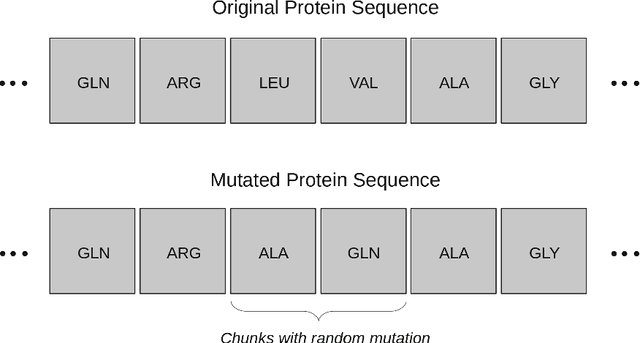
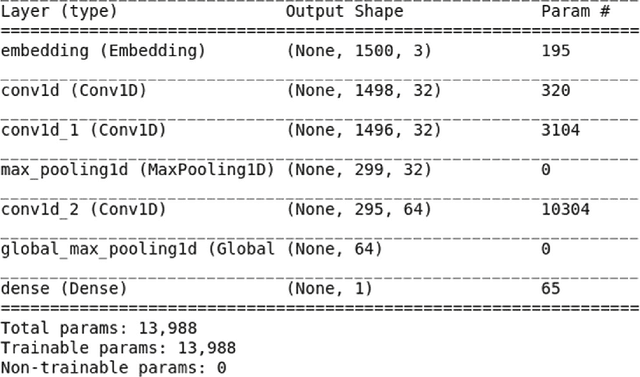
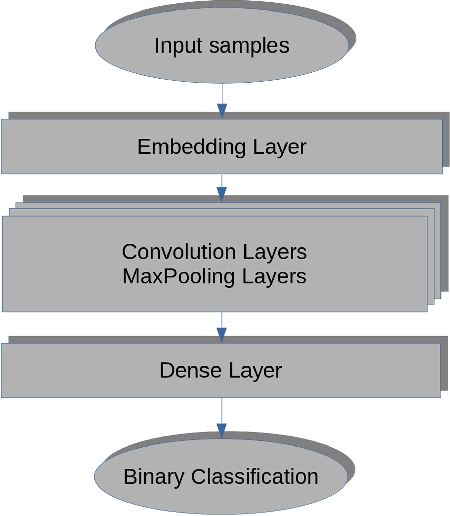
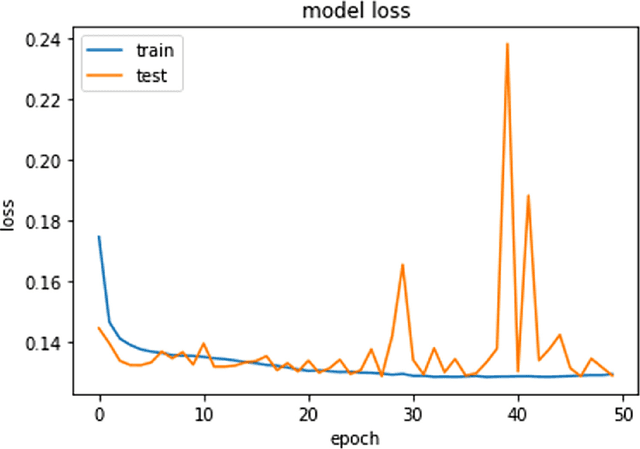
Abstract:In this work we present a system based on a Deep Learning approach, by using a Convolutional Neural Network, capable of classifying protein chains of amino acids based on the protein description contained in the Protein Data Bank. Each protein is fully described in its chemical-physical-geometric properties in a file in XML format. The aim of the work is to design a prototypical Deep Learning machinery for the collection and management of a huge amount of data and to validate it through its application to the classification of a sequences of amino acids. We envisage applying the described approach to more general classification problems in biomolecules, related to structural properties and similarities.
* International Conference on Computational Science and Its Applications, ICCSA 2020
IoT to monitor people flow in areas of public interest
Nov 03, 2021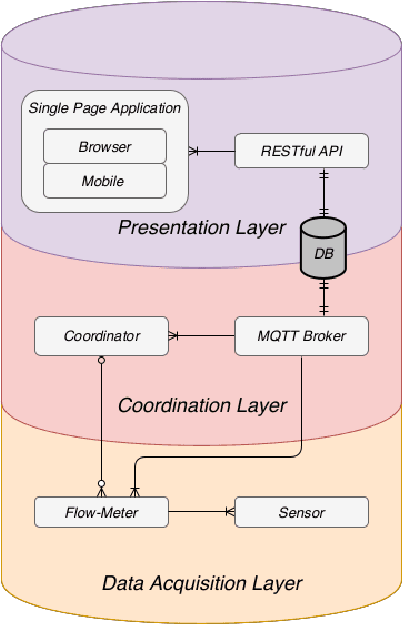



Abstract:The unexpected historical period we are living has abruptly pushed us to loosen any sort of interaction between individuals, gradually forcing us to deal with new ways to allow compliance with safety distances; indeed the present situation has demonstrated more than ever how critical it is to be able to properly organize our travel plans, put people in safe conditions, and avoid harmful circumstances. The aim of this research is to set up a system to monitor the flow of people inside public places and facilities of interest (museums, theatres, cinemas, etc.) without collecting personal or sensitive data. Weak monitoring of people flows (i.e. monitoring without personal identification of the monitored subjects) through Internet of Things tools might be a viable solution to minimize lineups and overcrowding. Our study, which began as an experiment in the Umbria region of Italy, aims to be one of several answers to automated planning of people's flows in order to make our land more liveable. We intend to show that the Internet of Things gives almost unlimited tools and possibilities, from developing a basic information process to implementing a true portal which enables business people to connect with interested consumers.
* International Conference on Computational Science and Its Applications, ICCSA 2021
Skin Cancer Classification using Inception Network and Transfer Learning
Nov 03, 2021
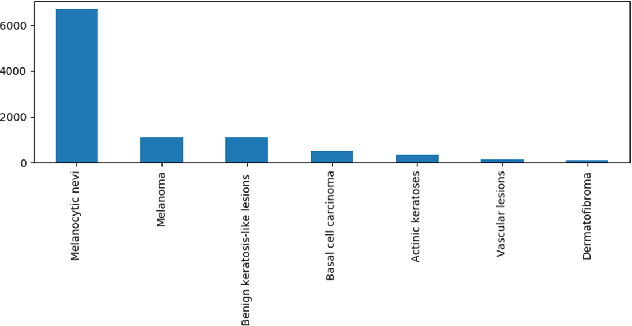
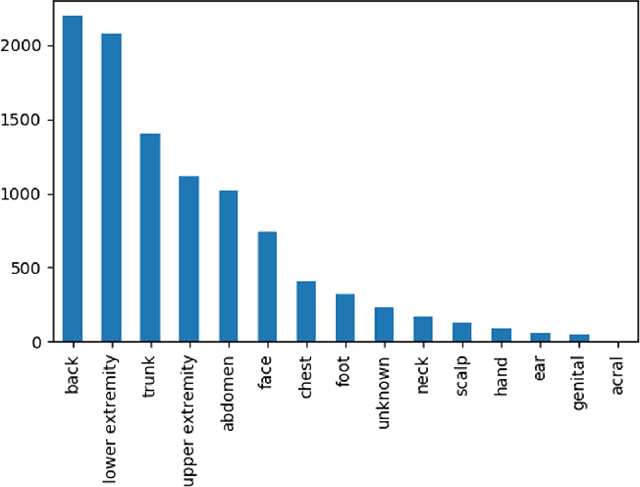
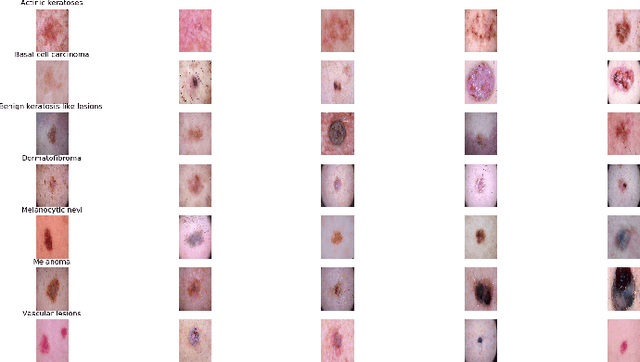
Abstract:Medical data classification is typically a challenging task due to imbalance between classes. In this paper, we propose an approach to classify dermatoscopic images from HAM10000 (Human Against Machine with 10000 training images) dataset, consisting of seven imbalanced types of skin lesions, with good precision and low resources requirements. Classification is done by using a pretrained convolutional neural network. We evaluate the accuracy and performance of the proposal and illustrate possible extensions.
* International Conference on Computational Science and Its Applications, ICCSA 2020
 Add to Chrome
Add to Chrome Add to Firefox
Add to Firefox Add to Edge
Add to Edge